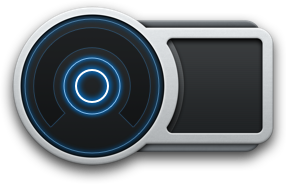-
-
在我们将螺丝刀伸向机器之前,我们先看看机器的技术规格。
-
13.3 英寸 LED 背光的视网膜显示屏,带有原彩显示技术,2560 x 1600 分辨率 (227 ppi) P3 广色域
-
2.3GHz 四核英特尔®酷睿™i5-8259U 处理器,Turbo Boost 高达 3.8GHz,集成 Iris Plus Graphics 655 核芯显卡。
-
苹果 T2 协处理器
-
8GB 2133 MHz LPDDR3 SDRAM 内存
-
256GB 基于 PCle 的固态硬盘
-
802.11ac Wi-Fi和 蓝牙 5.0 无线技术
-
四个 Thunderbolt 3 (USB-C) 接口,支持充电、DisplayPort 视频输出、Thunderbolt 技术 和 USB 3.1 Gen 2
-
-
-
剧透警告!就像往常一样,我们喜欢用超级英雄的视角来看看我们罹难者的内部。
-
我们的 X-光照片能呈现在你眼前得益于我们在Creative Electron 的心灵手巧的小伙伴的援助。
-
别担心,我们会把它拆开的,请继续看下去。。。
-
-
-
我们打开了去年的 13 英寸带触控栏的 MacBook Pro来进行一个快速的对比,如果说我们仅仅从外观上进行判断的话,我们会说这两台机器简直就是同一台电脑。
-
苹果宣称新款的蝶式键盘更加安静,但另一方面,其实并没有什么改进。在对一个接一个的键帽进行猛烈的敲击之后,我们发现键盘的声音变得更加低沉,没那么响的键盘,但没什么可以从分贝值大小来判定的区别。
-
目前为止最大的变化,新的型号:A1989,以及 EMC 3214。
-
X光还显示模块化耳机插孔又回来了,并提供了对Thunderbolt硬件的窥视—— 现在所有四个端口都全速运行,部分归功于第8代Core处理器的四个额外PCIE通道。
-
-
-
我们不费吹灰之力断开了电池排线,它被一颗 T5 内梅花头螺钉固定着,所以我们使用了我们的蓝色和黑色的专业螺丝刀来拆开它。
-
新的容量为 58 瓦时的电池比在旧款 13 英寸带触控栏的 MacBook Pro 所使用的49.2 瓦时的电池大了不少。
-
事实证明额外的电池容量来自于明显大了许多的电池。这次是六组电池,而不是旧款的五组。由于数量变多,重量也相应从旧款电池的 196.7g 增加到了 232.7g。
-
但是新款 MacBook Pro 的总重量并没有发生任何变化,我们不太清楚苹果到底给哪个部分减了重,但看起来苹果减少了上壳 (B 面) 的重量。
-
升级过的新扬声器 (图中右边的) 也变大了。现在它们变得更长,更窄,填充了电池以外的剩余空间。得益于经过修改的底壳设计,扬声器直接顶到了一旁的主板。
-
-
-
-
以下是我们熟悉的芯片们:
-
第 8 代英特尔®酷睿™ i5-8259U 处理器及 Intel Iris Plus Graphics 655 集成式图形处理器
-
苹果 T2 APL1027 339S00533 协处理器,叠加于来自镁光的 1GB D9VLN LPDDR4
-
东芝TSB 3226 J86404 TWNA1 (像是 2 颗 64GB 的闪存,这一边共有 128GB )
-
4 颗来自海力士的 H9CCNNNBJTAL16GB LPDDR3 2133 MHz 内存(总共 8 GB)
-
英特尔 JHL7540 Thunderbolt 3 控制器
-
苹果/环旭电子 (USI) 339S00428 Wi-Fi/蓝牙模块
-
338S00267-A0 芯片 (像是苹果的 PMIC)
-
由衷感谢以下译者:
82%
这些译者帮助我们修补全世界! 您也想加入吗?
开始翻译 ›
53条评论
RAID 0 SSD? From Samsung?
Hi Peter,
The “SSD”/flash memory is made by Toshiba.
Not in this series.
Keep in mind the T2 is a flash controller, so Apple is side stepping the PCIe/NVMe issue of the SSD instead using raw flash chips which are interleaved simular to how memory is done. The T2 presents the PCIe/NVMe interface to rest of the system.
In truth it’s like RAID, but it’s not! It’s something newer! As it’s soldered to the logic board Apple can get away with this.
Dan -
To elaborate on what Dan said, the T2 chip includes Apple’s own NVMe PCIe SSD controller, which they developed in house. Like most SSD controllers, it uses multiple channels (maybe 8 in this case?) to address the NAND flash dies and increase performance through parallelism. Both the T2 and the NAND flash packages are soldered directly to the logic board. It is also likely that the drive can tolerate the failure of individual blocks and pages, or perhaps even whole NAND dies by using parity data.
This is a different concept than RAID though, which employs Redundant Arrays of Independent Drives to increase availability and in some cases performance. RAID 0 in particular ditches the redundant bit and stripes across an array of independent drives purely for increased performance. Apple decided to put the NAND flash packages for the iMac Pro on a pair of removable modules, however they were in no way independent drives. There was still only a single SSD controller located in the T2 chip on the logic board.
The T2 processor should not be NAND Flash controller here. T2 is more like a RAID controller. Refer to https://duo.com/blog/apple-imac-pro-and-... The Toshiba chip here could be a PCIe/NVMe SSD in BGA chip package(like the one in the iPhone/iPad). The physical interface between T2 and Toshiba chip could be PCIe interface. T2 processor is also used to replace TI’s SMC controller.
JJ Wu -





































